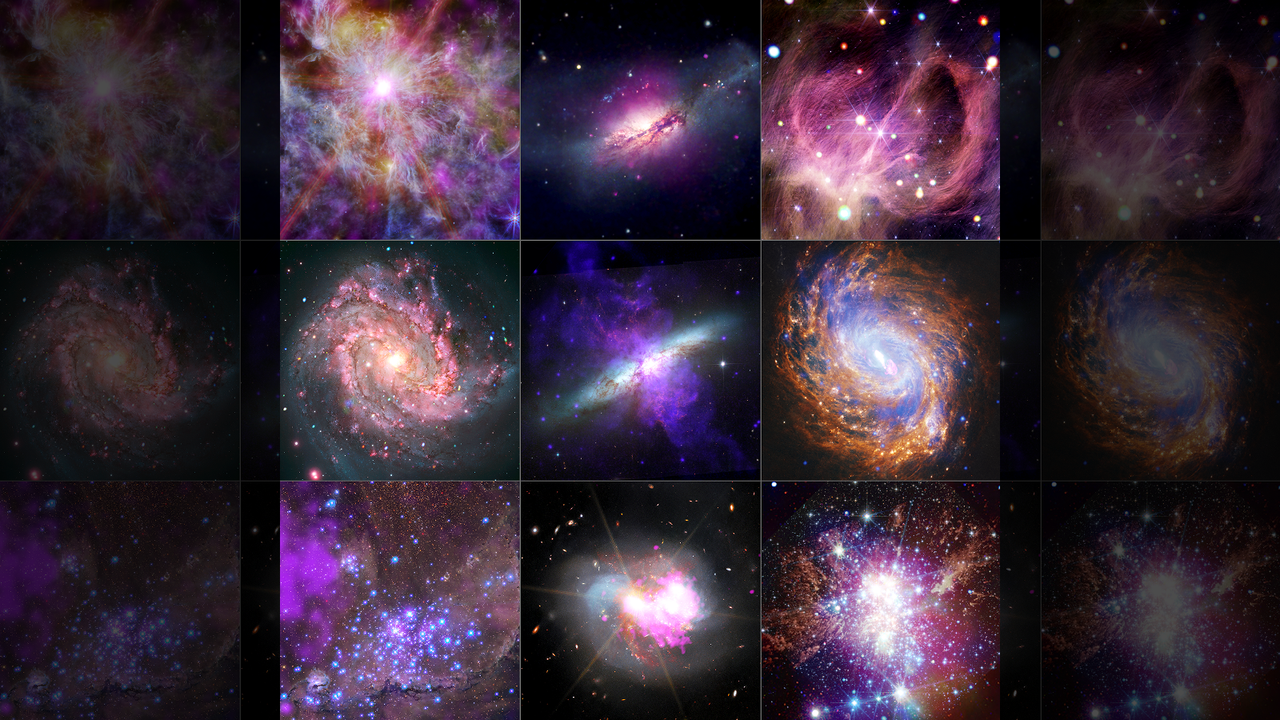Now Reading: NASA Reveals 9 Striking X-Ray Images of the Cosmos
-
01
NASA Reveals 9 Striking X-Ray Images of the Cosmos
NASA Reveals 9 Striking X-Ray Images of the Cosmos

Fast Summary
- What it is indeed: NASA released nine archive images captured by its Chandra X-ray Observatory, supported by Hubble Space Telescope and James Webb Space telescope (JWST).
- Focus: The images highlight star formation regions, distant galaxies, active black holes, supernova remnants, super-hot gas pockets, galaxy mergers, and newborn stars.
- When shared: July 23, 2025.
- Spectrum insights:
– Chandra detects high-energy X-ray light showing hot and energetic phenomena like supernovae and black holes.
– Hubble focuses on visible light; JWST specializes in infrared imaging.
– Combining these technologies allows researchers to observe the universe across different electromagnetic wavelengths.
- Highlighted objects in images:
– Star-forming regions like N79 (Large Magellanic Cloud) and IC 348.
– spiral galaxies M83 and NGC1068 featuring core winds from a black hole blowing at ~1.6 million km/h.
– M82 classified as a starburst galaxy with plumes of heated gas from rapid star formation.
– NGC346-a cluster filled with newborn stars embedded in debris of an exploded star-and IC1623 displaying galaxy merging processes igniting active star formations.
– Westerlund1-the closest super-star cluster showering powerful X-rays.
Images feature pink/purple hues for visualizing high-energy X-rays.A detailed video has also been released alongside individual breakdowns using separate telescopes.
Indian Opinion Analysis
NASA’s release demonstrates how advancements in multi-spectrum imaging deepen humanity’s understanding of complex cosmic phenomena. Particularly significant for India is the inspiration such endeavors hold-India boasts growing participation in space exploration through missions like Chandrayaan or Gaganyaan. With ISRO focusing on satellite deployments that study Earth’s atmosphere or lunar surfaces, collaborations or learning opportunities from pioneering projects such as Chandra may enhance India’s technical capabilities for exploring interstellar objects beyond our solar system.The data showcased from this set could potentially encourage global cooperation within space agencies to better utilize complementary technologies akin to NASA’s approach-merging infrared (JWST),visible light (Hubble),and high-energy X-rays (Chandra). For a nation deeply invested in fostering scientific innovation while balancing resource limitations strategically strengthening partnerships remains key toward broader celestial exploration goals beneficial science exchange globally accessible projects



























